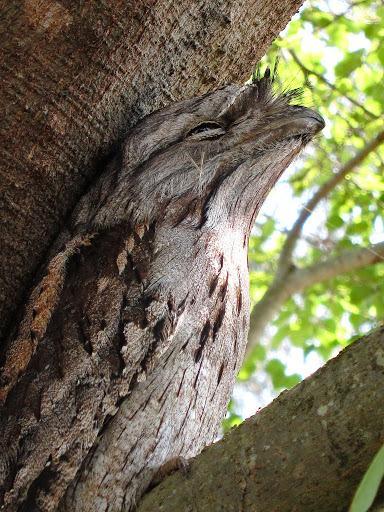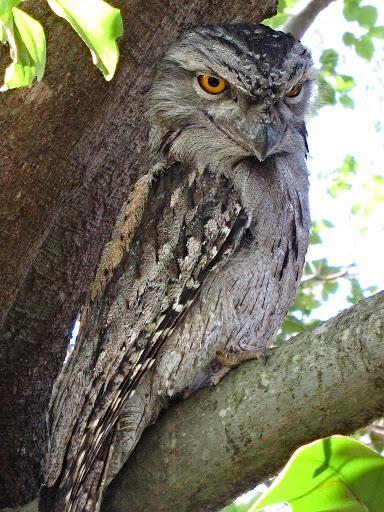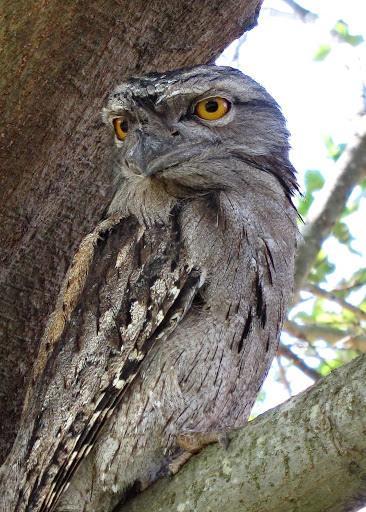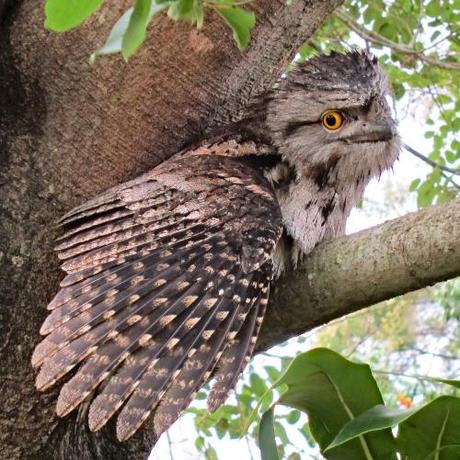Podargus strigoides





Photos taken by naross, in Brisbane, Queensland, Australia.
Tawny Frogmouths (Podargus strigoides) are Australian native birds and are members of the nightjar family. Often mistaken for owls, Tawny Frogmouths are more closely related to kookaburras and kingfishers than to owls.
Males and females look alike and are 14–21 in long. These birds can weigh up to 1.5 lbs to as much as 3.1 lbs in the case of overweight zoo specimens. They have yellow eyes and a wide beak topped with a tuft of bristly feathers. They make loud clacking sounds with their beaks and emit a reverberating booming call.
Tawny Frogmouths hunt at night and spend the day roosting on a dead log or tree branch close to the tree trunk. Their camouflage is excellent and by staying very still and upright, they look just like part of the branch.
The Tawny Frogmouth’s diet is made up of nocturnal insects, worms, slugs, snails, small mammals, reptiles, frogs and birds. They catch their prey by pouncing to the ground from a tree or other elevated perch. Some preys, such as moths, are caught in flight, which has led to many unfortunate instances of birds being hit by cars while chasing insects illuminated in the beam of the headlights. Unlike owls who fly around at night hunting, the Frogmouths sit very still on a low perch and wait for food to come to them, catching their prey with their beaks rather than with their talons. Like owls, Frogmouths have large eyes, excellent hearing, and are silent in flight.
The Tawny Frogmouth can be seen in almost any habitat type (except the denser rainforests and treeless deserts), including heath, forest and woodlands, urban and rural areas. They also have been seen in backyards and on fences, roosting during daylight hours in trees.
Source: Project Noah
~Eowyn

